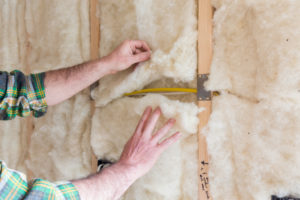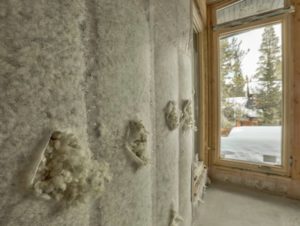When we started Havelock Wool we were adamant about offering the two main types of insulation, batts and blown-in (loose fill). There are advantages to each and we wanted to offer the right product for the right application at all times.
In the spirit of informed decision-making, let’s compare batts and blown-in so you can be better prepared to use the right product for every project.
Comparing Blown-in Insulation and Batt Insulation
Batt insulation is akin to a large blanket designed specifically to fill a wall, floor or ceiling cavity. Batts were largely developed with the consumer in mind as they are ideal for perfectly sized modern framing with few electrical and plumbing obstructions. Quickly place them into the cavity and you are ready for drywall and finish work. They have been adopted by the construction industry as more installers looked for faster and less expensive methods to finish projects. The problem: perfect cavities rarely exist and great attention needs to be taken to split, cut, and modify batts to fit around obstructions or else the performance is severely compromised. Paper-faced vapor barriers further hide installation defects- out of sight, out of mind. Not many consumers know this.

Blown-in, aka loose fill, insulation is different. The material tends to be loose fibers and in the worst-case foam. For us, it’s knops (or balls) of wool. Unlike batts, blown-in was developed to be high-performance insulation installed by professionals with a blowing machine. The material is forcefully blown into a cavity enabling it to wrap around and get behind common obstructions. This creates exceptional coverage and performance, i.e. R-value but the installation process is more involved than that of batts.

Let’s breakdown the Havelock Wool Batts and Blown-in Products
Havelock Blown-in (Loose Fill)
Highest R-Values of 4.3 per inch
Fills all voids
No cutting or tearing around wires, pipes, and boxes
Slightly better sound absorption
Installation equipment required for larger projects
Havelock Batts
High R-Value, up to 3.8 per inch
Installs without equipment, or protective clothing
Simplicity of measuring and ordering
Requires modification around electrical, plumbing
Minimal prep work
What is best for me?
The answer is a bit wonky: it totally depends! At a high level, if you want things done more quickly and easily, go with batts. We don’t condone reckless installs but batt installation is likely to go faster. If you want optimal performance, take the time to do the blow-in. It is a better product and it performs better once installed.
There are some specific applications that make your decision a bit easier. Generally speaking, loose fill is a no brainer for attics and between floors and exterior wall cavities using cheap retainer mesh. Batts are the best call for your average DIY’er who does not want to use installation equipment.
We’re in the discussion frequently. Please let us know how we can help with your next project or specification.

Hi. I’m looking for a product to fill very small spaces. It’s going in a yurt where the walls meet the ceiling. Small areas placed my hand.
Our blown-in product could work very well in your case. Thanks.
Who does this in the San Diego area blow in? Thank you
Please call us on 775 971 4870 and we can help. Thanks.
First off, great article. Does blown in result in any settling over time? This was something I was always led to believe. I see batts being used 95% of the time, but as a passive house designer I really like the idea of blown in. Thanks!
Blown-in insulation is typically chosen because of its advantages against settling. Two main considerations or culprits for settling are as follows:
Mainstream insulation is typically made of low integrity synthetic fibers. Under a microscope there is little to see other than what essentially looks like a piece of spaghetti. A weak fiber is similarly weak in its defenses against moisture and gravity.
More specifically, these fibers are often hydrophilic – meaning when they do come in contact with water/ moisture/vapor they absorb, get heavy and sink. With the constant ebb and flow of vapor, over time weak fibers tend to break down, lose (any) integrity, turn into dust and inevitably settle. Fortunately wool is quite strong compared to cellulose, fiberglass and stone wool. Havelock Wool has five follicles, is hygroscopic and hydrophobic. The fiber is shaped like a spring and has an inherent natural design to “move” when in contact with humidity and temperature swings. This is literally what allows sheep to survive and in fact thrive in challenging weather conditions. These characteristics also apply to ambient changes in your walls!
The second issue is density. Other fibers are “engineered” to hit the highest R value but at a very specific and typically high density. Havelock wool density is 1.13 lbs per cubic foot versus ~3.5 lbs per cubic foot for cellulose. Havelock Wool, on the other hand, can remain airy and light by comparison given the integrity and capability of the fiber’s construct. In the end, this means wool gives you a fiber that is not negatively impacted by moisture and has the capacity to absorb and desorb thus avoiding slumping over time.
Curious if these products are available in Alaska?
Yes, we can ship to Alaska when you purchase off our site. Please contact sales@havelockwool.com with any questions. Thanks.
I see several different types of ventilated fabric for the blown in. Are there any you know of that are not plastic? LEED certified?
Michael – None that we are aware of as of now. Thanks.